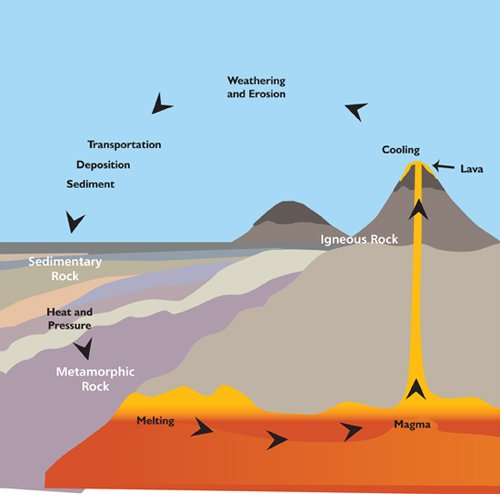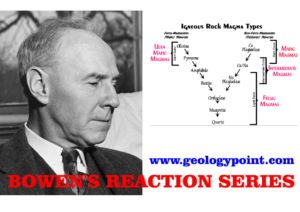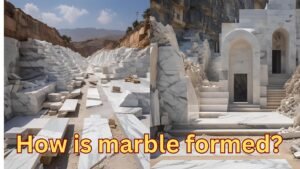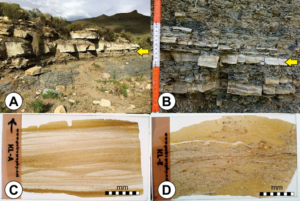Have you ever picked up a rock and wondered how it was made or where it came from? You’re not alone. Rocks may seem ordinary, but they hold incredible stories about the Earth’s history—millions (even billions!) of years in the making. Whether you’re a curious student, an outdoor enthusiast, or someone just getting into geology, understanding the types of rocks in geology is your first step into a fascinating world.
In this article, we’ll break down the three main types of rocks– igneous, sedimentary, and metamorphic in a way that’s easy to follow, informative, and yes, even a bit fun.
What Are Rocks?
Before diving into types, let’s start with the basics. Rocks are naturally occurring solid aggregates made up of one or more minerals. They’re everywhere, from the sand beneath your feet to the mountains touching the sky.
In geology, rocks are classified not just by their appearance, but by how they’re formed. That’s where the three major rock types come in.
Igneous Rocks:
The word “igneous” comes from the Latin word ignis, meaning fire. And that’s exactly how these rocks are formed—from the cooling and solidification of molten magma or lava.
Two Types of Igneous Rocks:
- Intrusive (Plutonic) Igneous Rocks: These form below the Earth’s surface. Magma cools slowly, allowing large crystals to form. Example? Granite—it’s what many kitchen countertops are made of!
- Extrusive (Volcanic) Igneous Rocks: These form on the surface when lava erupts from a volcano and cools quickly. The result? Small or no visible crystals. Think of basalt—a dark, fine-grained rock that covers much of the ocean floor.
Common Examples:

Why They Matter:
Igneous rocks help geologists understand the volcanic activity, Earth’s internal processes, and even help locate valuable mineral deposits.
Sedimentary Rocks:
If igneous rocks are born from fire, sedimentary rocks are built over time, layer by layer. These rocks form from particles (sediments) that settle in water or air, get compacted, and eventually harden.
How Do They Form?
- Weathering and erosion break down rocks into smaller particles.
- These particles are transported by wind, water, or ice.
- Over time, sediments get deposited in layers, often in rivers, lakes, or oceans.
- These layers get compressed and cemented into rock.
Types of Sedimentary Rocks:
- Clastic – Made from broken fragments of other rocks (e.g., sandstone, shale).
- Chemical – Formed when minerals precipitate out of a solution (e.g., rock salt, limestone).
- Organic – Formed from remains of living things (e.g., coal, fossiliferous limestone).

Why They Matter:
Sedimentary rocks are like Earth’s diary. They often contain fossils, giving clues about ancient life and past climates. They also hold oil, natural gas, coal, and groundwater—resources we rely on daily.
Metamorphic Rocks:
Metamorphic rocks start as either igneous or sedimentary rocks, but change form under intense heat and pressure without melting. This process is called metamorphism that creates new minerals, textures, and structures.
Think of it as nature’s way of giving rocks a makeover.
Types of Metamorphism:
- Regional Metamorphism: Happens over large areas due to tectonic forces (common in mountain-building).
- Contact Metamorphism: Occurs when magma intrudes nearby rock, heating and altering it.
Common Metamorphic Rocks:
- Slate (from shale)
- Schist
- Gneiss (from granite)
- Marble (from limestone)
Why They Matter:
Metamorphic rocks are used in construction, art, and architecture. Marble sculptures? Thank metamorphism. They also help geologists understand Earth’s internal pressures and temperatures over time.

Rock Cycle – Nature’s Recycling System
One of the coolest things about rocks is that they’re never truly “finished”. Thanks to the rock cycle, rocks can transform from one type to another over time.
For example:
- Igneous rock can break down into sediments → become sedimentary rock → get buried and compressed → turn into metamorphic rock → melt into magma → and start the cycle all over again.
It’s geology’s version of reincarnation!

How to Identify Rock Types in the Field
Want to try your hand at identifying rocks? Here are a few tips:
Texture: Igneous rocks may be glassy or crystalline, sedimentary rocks are often layered or gritty, and metamorphic rocks may be shiny or banded.
Color: Not always a reliable indicator, but it can help. Basalt is typically dark, while limestone is light.
Grain Size: Fine grains suggest rapid cooling (like extrusive igneous rocks), while coarse grains suggest slow cooling or compaction.
Reaction with Acid: Some sedimentary rocks (like limestone) fizz with vinegar or HCl due to their calcium carbonate content.






Somebody essentially help to make critically posts
I might state. That is the first time I frequented your website
page and thus far? I amazed with the analysis you made to
create this particular publish incredible. Fantaatic
job!
hello!,I love your writing very much! percentage we be in contact more about your post on AOL?
I require a specialist on this area to unravel my
problem. May be that is you! Having a look forward to
see you.
Heya i’m for the first time here. I found this board and I find It really useful & it helped me out a lot.
I hope to give something back and aid others like you aided me.
Ahaa, its pleasant discussion regarding this piece of writing
here at this weblog, I have read all that, so
at this time me also commenting at this place.
Howdy just wanted to give you a brief heads up and let you know a few of the images
aren’t loading correctly. I’m not sure why but I think its
a linking issue. I’ve tried iit in two different internet browsers and
both show the same outcome.
These are actually enormous ideas in on the topic of blogging.
You have touched some good factors here. Any way keep up wrinting.
Nice post. I was checking continuously this blog and I am impressed!
Very useful information particularly the last part 🙂 I care for such information much.
I was seeking this certain information for a very long time.
Thank you and good luck.
Nice blog! Is your theme custom made or did you download it
from somewhere? A design like yours with a few simple adjustements would really make my blog stand out.
Please let me know where you got your design. Many thanks
That is a great tip especially to those fresh to the blogosphere.
Short but very accurate info… Many thanks for sharing this
one. A must read article!